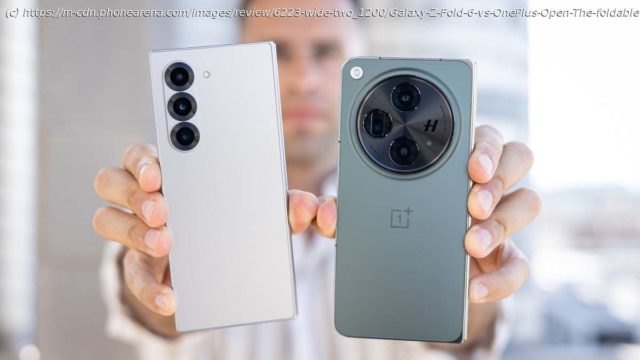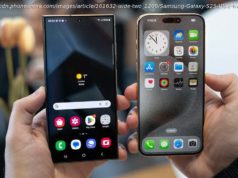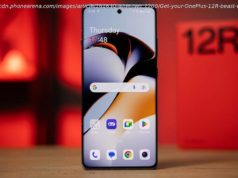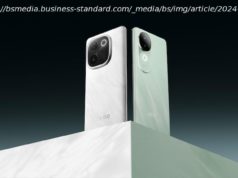The OnePlus Open is a foldable phone that hit the jackpot from the get-go. The Galaxy Z Fold 6, on the other hand, shapes up to be a slightly iterative and cautious update. How will these two phones compare?
Intro
The Samsung Galaxy Z Fold 6 is the newest installment in the company’s lengthy foldable phone roster. Now, we didn’t really expect any major changes, and at the end of the day, this is precisely what we got. The Galaxy Z Fold 6 is a very safe evolutionary step that introduces slight design updates and hardware upgrades.
Meanwhile, the OnePlus Open is easily among the very best foldable phones we’ve seen so far, with a spectacular build and design. It also has a very capable camera, superb performance and battery life, lovely displays, and a very attractive price tag. It’s a phone that got many things right from the get-go, leaving us really intrigued as to how a potential second-gen OnePlus Open could work.
Galaxy Z Fold 6 vs OnePlus Open differences:
Galaxy Z Fold 6OnePlus Open
Similar design as previous Galaxy Z Fold devices One of the best-designed foldable phones of 2023
Similar camera system to the past two generations A very powerful camera system that rivals many standard flagships
12GB of RAM, 1TB of storage variant also available Lots of RAM and native storage, but a single storage/RAM version
Qualcomm Snadrpagon 8 Gen 3 chip on board A capable but older Snapdragon 8 Gen 2 chipset
Smaller 4,400mAh battery A large 4,805mAh battery
Slower 25W charging Super-fast 67W wired charging
Table of Contents:
Design and Size
Display Differences
Performance
Camera
Audio Quality
Battery and Charging
Specs
Summary
Read more:
OnePlus Open Review: Probably the best foldable phone of 2023
Samsung Galaxy Z Fold 6 vs Google Pixel Fold: High-level bout
Design and DisplayCan Samsung beat OnePlus?
Who’s playing catch here? (Image by PhoneArena)
With the Galaxy Z Fold 6’s predecessors, Samsung finally introduced a no-gap design when folding the screen but didn’t fix that display crease that runs across the display like a canyon. Sadly, despite the introduced novelties in the Galaxy Z Fold 6, there is still a visible display crease that you can easily feel when running your finger across.
Samsung’s foldable still relies on Armor Aluminum (no titanium here) and uses Corning’s Gorilla Glass Victus 2. Due to internal design changes, however, Samsung has achieved significant weight savings, resulting in a total weight of just 239gr, impressive for a foldable phone!
While the Galaxy Z Fold range was the first to deliver a large mainstream foldable phone, the OnePlus Open did so much right from the get-go. The OnePlus Open is a slightly heavier but very well-built foldable phone with no wedge between the bottom and top panels, as well as virtually no display crease, which makes for a very pleasing user experience.
Both phones feature excellent design (Image by PhoneArena)
Resistance-wise, the OnePlus Open is merely rated as an IPX4 device, which means it’s only splash resistant and any serious contact with water might damage it. Meanwhile, the Galaxy Z Fold 6 receives an official IP48-rated phone, which means it can survive in up to 1.5m of freshwater for up to 30 minutes and it will also resist larger particles, but does not have full dust resistance.
Each of these two foldable phones have unique features of sorts. For the OnePlus Open, that’s the wildly useful ring switch, a signature OnePlus quirk. At the same time, the Galaxy Z Fold 6 also supports a unique version of Samsung’s S Pen, although it doesn’t have a silo slot on deck.
Colors-wise, the Galaxy Z Fold 6 comes in Silver Shadow, Pink, and Navy, while Crafted Black and White are exclusively available on Samsung.com. The OnePlus Open is only available in two colors, Emerald Dusk and Voyager Black.
Screens for days (Image by PhoneArena)
The OnePlus Open remains the phone with the larger display. It has a 7.8-inch internal screen, which has a nearly perfect square aspect ratio, while the external screen measures 6.3 inches in diagonal. Both screens are AMOLED ones, with HDR support, dynamic refresh rate that goes as up to 120Hz for a super-smooth experience, and high maximum brightness.
Once again, no crease on the OnePlus Open, which is something you definitely want to see on foldable phones going forward!
At the same time, the Galaxy Z Fold 6 comes along with a 7.6-inch outer screen with a more squarish aspect ratio of 20.9:18 (as opposed to the Galaxy Z Fold 5’s 22:9 one). The outer screen is a 6.3-inch AMOLED one with a 22.1:9 aspect ratio (vs 23.1:9 on the Galaxy Z Fold 5). Both panels boast a dynamic refresh rate of 1 to 120Hz, which ensures for a very smooth experience based on the on-screen content.
As per our own benchmark tests, the Galaxy Z Fold 6 surpasses the OnePlus Open in terms of maximum brightness, achieving north of 1,400 nits of peak brightness. This is noticeably higher than the OnePlus Open, which hits a “measly” 1034 nits of max brightness. The minimum brightness is also superior on the Galaxy Z Fold 6, going down to just a single nit of brightness. The display of the Galaxy Z Fold 6 is more color-correct out of the box, too.
Display Measurements:
Screen measurements
Color charts
Maximum brightnessHigher is betterMinimum brightness(nits)Lower is betterColor temperature(Kelvins)GammaDelta E rgbcmyLower is betterDelta E grayscaleLower is better
Samsung Galaxy Z Fold 6 1449
(Excellent) 1
(Excellent) 6687
(Excellent) 2.02
2.70
(Good) 6.27
(Average)
OnePlus Open 1034
(Excellent) 1.9
(Excellent) 7416
(Good) 2.2
2.36
(Good) 5.33
(Average)
View
all
Color gamut
Color accuracy
Grayscale accuracy
The CIE 1931 xy color gamut chart represents the set(area)of colors that a display can reproduce,with the sRGB colorspace(the highlighted triangle)serving as reference.The chart also provides a visual representation of a display’s color accuracy. The small squares across the boundaries of the triangle are the reference points for the various colors, while the small dots are the actual measurements.






